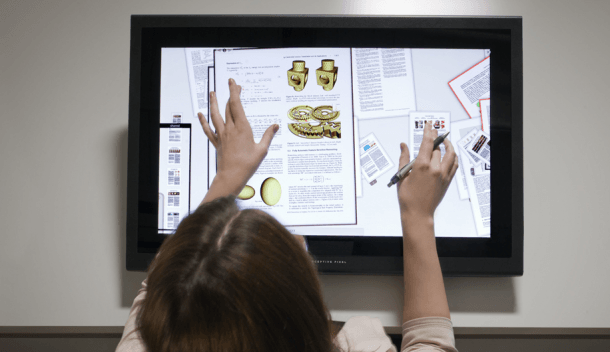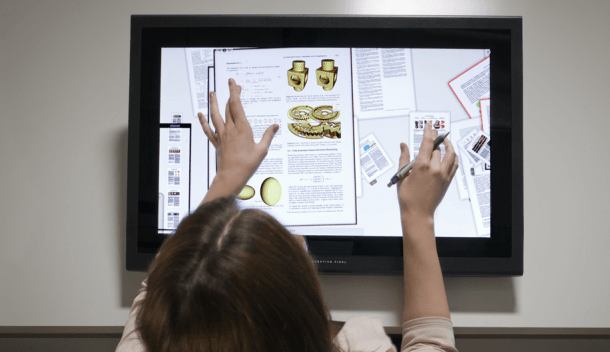
Microsoft Buying Touch Display Maker Perceptive Pixel
July 9, 2012 by Dave Haynes
Microsoft has entered into a definitive agreement to acquire Perceptive Pixel, which makes gorgeous, highly responsive and wildly expensive multi-touch displays.
“The acquisition of PPI allows us to draw on our complementary strengths, and we’re excited to accelerate this market evolution,” says Kurt DelBene, president, Office Division for Microsoft. “PPI’s large touch displays, when combined with hardware from our OEMs, will become powerful Windows 8-based PCs and open new possibilities for productivity and collaboration.”
PPI was founded in 2006 by Jeff Han, one of the first guys to explore and really demo the idea of multi-touch. The company only shipped its first multi-touch workstation and large wall solutions in early 2007, and a year later broadcasters like CNN (which LOVES gadgets) were using it during the 2008 U.S. presidential election.
The company’s patented technologies are used across a wide variety of industries such as government, defense, broadcast, energy exploration, engineering and higher education. It is crazy expensive for mainstream digital signage, but workable for sectors like looking at seismic imagery.
The 27-inch display I saw demo’d cost well north of $5K. The 82-incher costs $80K. Microsoft head Steve Ballmer concedes: “Our challenge is to make that technology more affordable.”
Uh, yeah.
“We are incredibly excited to be working together on our mutual passion to build technologies that enable people to collaborate and communicate,” says Han. “By joining Microsoft, we will be able to take advantage of the tremendous momentum of the Microsoft Office Division, tightly interoperate with its products, and deliver this technology to a very broad set of customers.”
Han is probably also excited by the check he’ll get, though actual terms of the deal were not disclosed. The acquisition is subject to customary closing conditions, including regulatory approval.
The company is based in New York, but actual manufacturing is done at a facility outside of Portland, OR. Hellberg and I had a chance to visit there several weeks ago, tagging along with a client eager to find a larger touch display that didn’t, well, suck. The company produces large format displays that have the projected capacitive touch responsiveness of an iPad. They do that using miles and miles and miles of filament wire built into the displays, instead of overlays. The facility was small, but impressive.
The product coming out of there drives experiences that replicate tablets and smartphones, and not the generally dodgy experience you get with overlays and edge sensors on other interactive screens.
Touch is a huge aspect of Microsoft’s Windows 8, so the logic behind this buy is fairly apparent. They get access to IP and engineers who’ve really got touch interfaces down.




Leave a comment